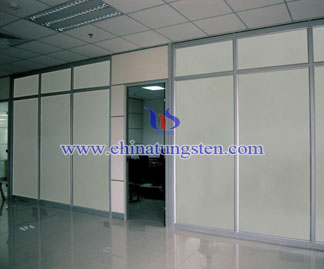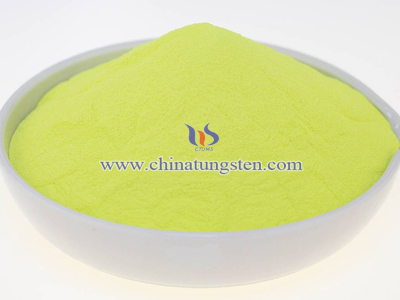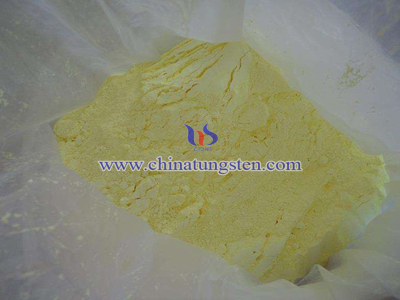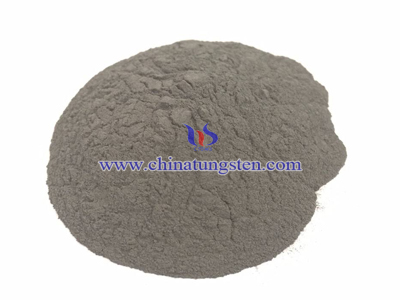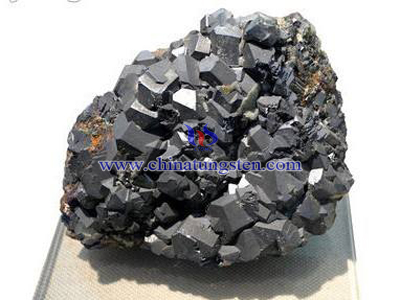Tungsten Oxide Electrochromic Glass
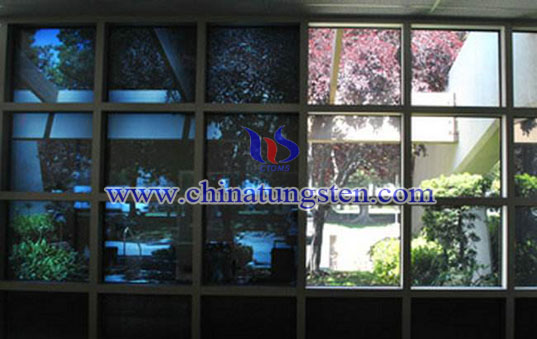
Development
Electrochromic is the changes in polarity and strength of extra electric field which causes reversible oxidation or reduction of material, thus causes the changes in color. Since 1973 when S.K.Deb found electrochromic of WO3, it has been researched by many scientists. Until 1987, Gentex company introduced this technology and it is applied in people’s daily life, the electrochromic car mirror was used in some luxurious cars which has now become basic configuration of common cars. In 2011, auto glare-free car mirror produced by Gentex takes 87% of market share, in the mean time electrochromic glasses for air plane porthole also come into market, annual sales can reach 10 billion dollars. However, Gentex uses organic material for electrochromic glass which is liquid electrolyte. It is easy to produce and of low cost. Due to instability of organic material, it can not be applied as outer glasses for building.
Structure
There are five thin film layers between electrochromic glasses which are transparent conductive layer, electrochromic layer, electrolyte layer, ion storage layer and another transparent conductive layer.
Transparent Conductive Layer
Transparent conductive layer is used as electrode material which functioned as conductor to adding voltage for the coloring or bleaching of device. Its conductivity determines transfer efficiency of electrochromic device, so the transparent conductive layer needs to have high conductivity, optical transmission and chemical stability. Usually semi-conductor oxide is used as raw material, among which ITO(indium-tin-oxide) or Al-doped Zinc oxide thin film is the ideal material which are often prepared by sputtering or electron beam evaporation method.
Electrochromic Layer
Electrochromic layer is the center part of the device, requires good optical contrast ratio of colored state and fading state. For display device, it requires well degree of color contrast. Except for organic and inorganic material, inorganic mixing material, organic mixing material and organic-inorganic mixing material are used as electrochromic layer, it can improve property of electrochromism and prolong service life of the device.。
Ion Conductor Layer
It is an important part of electrochromic device. It should have the following features: provide gegenion for electrochromic material; high conductivity; electrolyte should be transparent when device is worked under transmission-mode; it has no corrosion on EC and CE layer and there are no irreversible chemical reaction and can be made into thin film easily. Liquid electrolyte and solid electrolyte are commonly used. Liquid electrolyte is widely used in research as ion conductor for its high conductivity which can provide faster electrochromic reaction, but it is inconvenient in usage. In order to make it easy to encapsulate and avoid corrosion, we often use fast ion conductor. Solid electrolyte has better circuit memory capability and easy to encapsulate, but reaction time will take longer.
Ion Storage Layer
It balances electric charges during coloring state. As the glean or emitter of electron, it has reversible chemical property and mixing conductivity of ion and electron. There are some reports about using tungsten oxide and polyaniline, tungsten oxide and titanium oxide, tungsten oxide and nickel oxide as electrochromic layer, which can improve coloring efficiency of device, reduce powder consumption.
Electrochromic Mechanism
Take cathodic coloring as an example, electrochromic mechanism is when there is no voltage added on both sides of device, the electrochromic layer is transparent. When adding voltage to both side of device, Li ion storaged in ion storage layer goes into interstitial atom of WO3 thin film which forms LiWO3-x, then W6+ is reduced into W5+ , electron absorbs photon by transition from W6+ to W5+ which causes discoloration. Chemical equation is: WO3+ne-+nLi+ → LinWO3.

